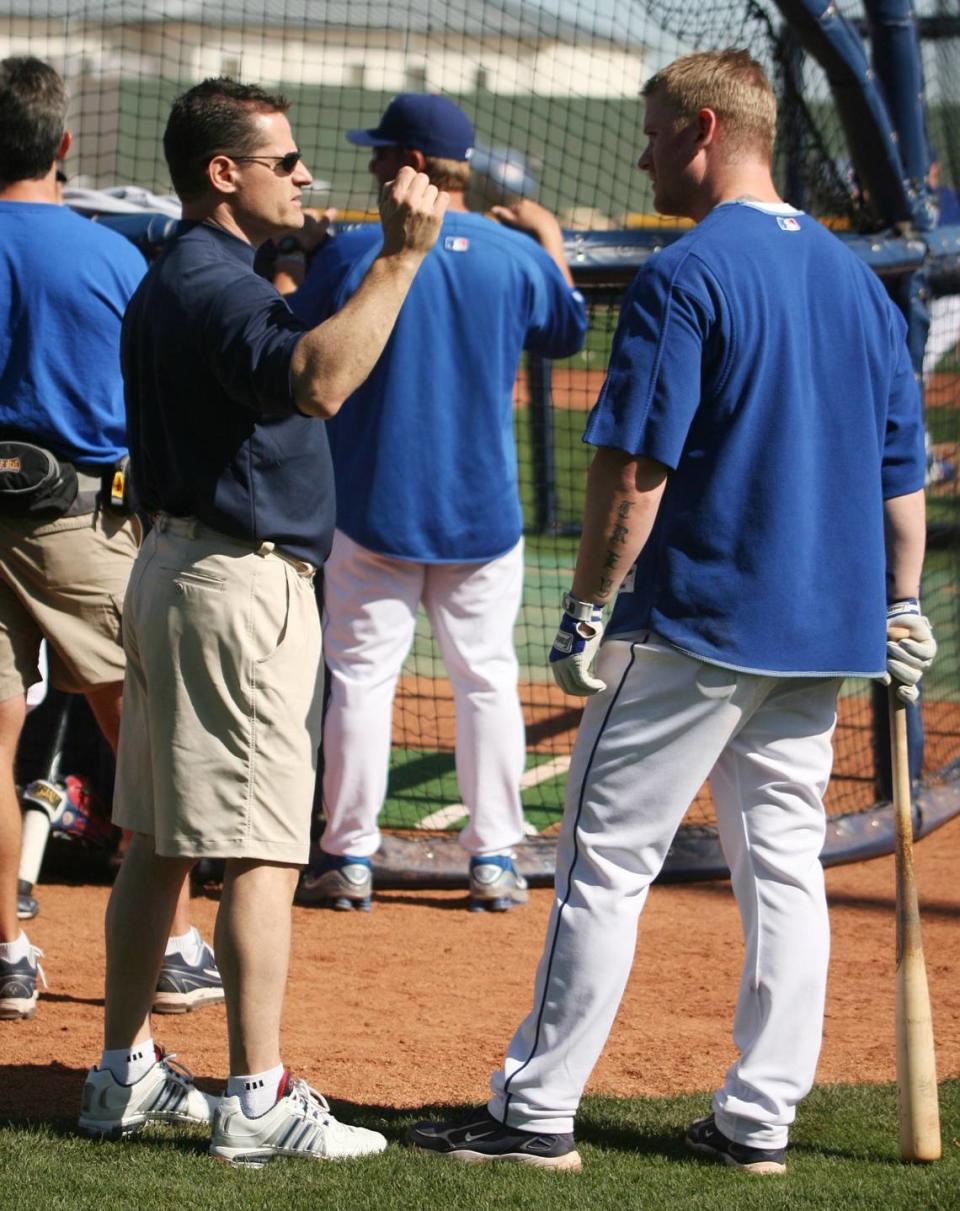How Arlington became a go-to destination for baseball’s most popular surgery
When Dr. Keith Meister opened his first office in Arlington 20 years ago, it didn’t even have an exam room.
Instead of exam tables covered in crinkly paper, most of Meister’s patients sat in a reclining chair.
Today, Meister’s surgery practice is one of the go-to spots in the nation for Tommy John surgery, a procedure that’s become increasingly common among baseball players. Meister’s practice, and his position as the team physician of the Texas Rangers, has made Arlington one of several Tommy John “capitals” of the U.S., attracting injured baseball players from teams across the nation who hope time in Meister’s operating room can save their careers.
Meiser’s specialty is one well known to baseball fans. Tommy John surgery was first performed in 1974 on Los Angeles Dodgers pitcher Tommy John, rescuing his career from a diagnosis that was previously a death knell for players. The surgeon who performed the surgery, Dr. Frank Jobe, is the only doctor in the National Baseball Hall of Fame.

The surgery repairs a torn ligament inside the elbow by using a healthy tendon from elsewhere in the body, Meister explained. Baseball pitchers are the athletes who most frequently suffer this damage, because the speed and frequency of their pitches cause chronic stress on the elbow joint. Tommy John surgery is almost exclusively used on advanced, high-level athletes, said Dr. Brian Grawe, a professor at the University of Cincinnati and team physician for the Bengals. Those most in need of it are baseball pitchers, but javelin throwers and gymnasts can sometimes require it to.
“You or I do not need this surgery,” Grawe said
Since the first surgery was performed 50 years ago, the number of surgeries completed annually has risen steadily, particularly in the last 15 years. Why? Pitchers are throwing faster and throwing more, causing them to wear out their elbows earlier in their careers than ever before.
“The game has changed, not necessarily for the better,” Meister said.
Meister points to the jumps in pitch speed as an indicator of the growing stress players are putting on their elbow joints: In 2022, the average fastball velocity was 88.5 mph. Today, the average fastball approaches 95 mph.
“The stresses and the loads that the pitching arm is seeing now is far, far greater than what it used to be,” he said.

Last year, Meister performed 230 Tommy John surgeries. This year, he said, he and his nine partners are on track to do about 300 surgeries, he said.
Across the nation, there are plenty of surgeons like Grawe, who will operate on athletes needing Tommy John surgeries on an as needed basis. But there are only a handful like Meister who specialize almost exclusively in the procedure and who attract athletes from all over. In addition to Meister, surgeons in Los Angeles and New York are also destinations for pitchers in need. Dr. James Andrews, Meister’s mentor and a leading Tommy John surgeon based in Alabama, retired earlier this year.
As demand for the surgery has increased, more and more players have flocked to Meister’s clinic in Arlington for a fix that could prolong their careers. And unless there’s a dramatic change in baseball, Meister said demands for the surgery will only continue to grow.
“The solution is not that difficult, but the game has to want to change,” Meister said.

 Yahoo Sports
Yahoo Sports 
